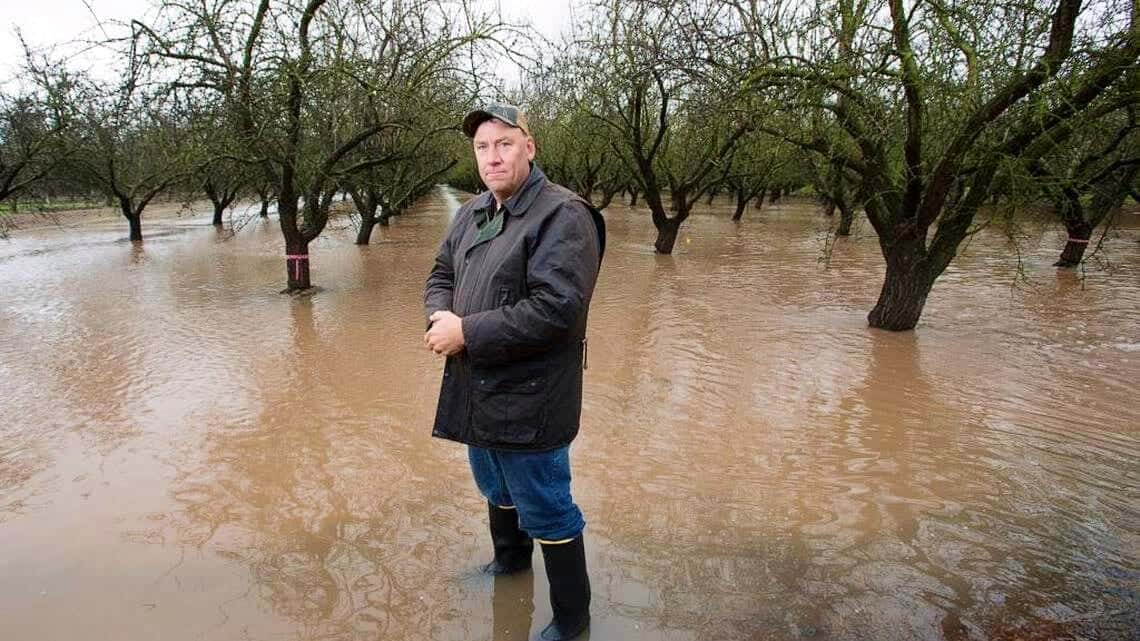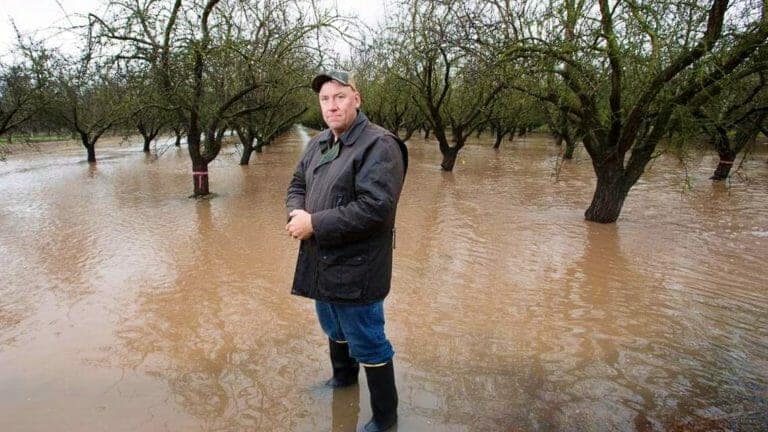Photo: Modesto farmer Nick Blom stands in his 5-acre almond orchard intentionally flooded with stormwater as an experiment to restore the depleted aquifer in January 2016. This is one of many measures the almond industry is taking to restore and conserve water. Photo by Paul Kitagaki Jr., The Sacramento Bee
California grows 80 percent of the world’s almonds, generating $11 billion annually for the state’s economy. Richard Waycott of the Almond Board of California explains what the industry is doing to use less water and stretch every drop.
Much was written during California’s recent five-year drought about the amount of water used by almonds. The nuts have become California’s most lucrative agricultural commodity, and a major export product.
Long before concerns about water use by almond growers emerged, the industry initiated measures to conserve water by embracing micro-irrigation systems. It has also become a leader in efforts such as recharging groundwater by flooding almond orchards during winter storms.
The water required to grow almonds also grows more than nuts. Other materials from the plant – from the tree itself to the nut hull – are used in a variety of products, with initiatives underway to find new uses for these materials.
To explain these initiatives further […]
Full article: Almond Farms Keep Growing, and Keep Moving on Water Conservation
More about farming and water:
- Farming activity contaminates water despite best practices
- No-till farming can help save water, proponents say
- Man using technology to improve water usage in farming
- Drought Forces Hard Choices for Farmers and Ranchers in the Southwest



